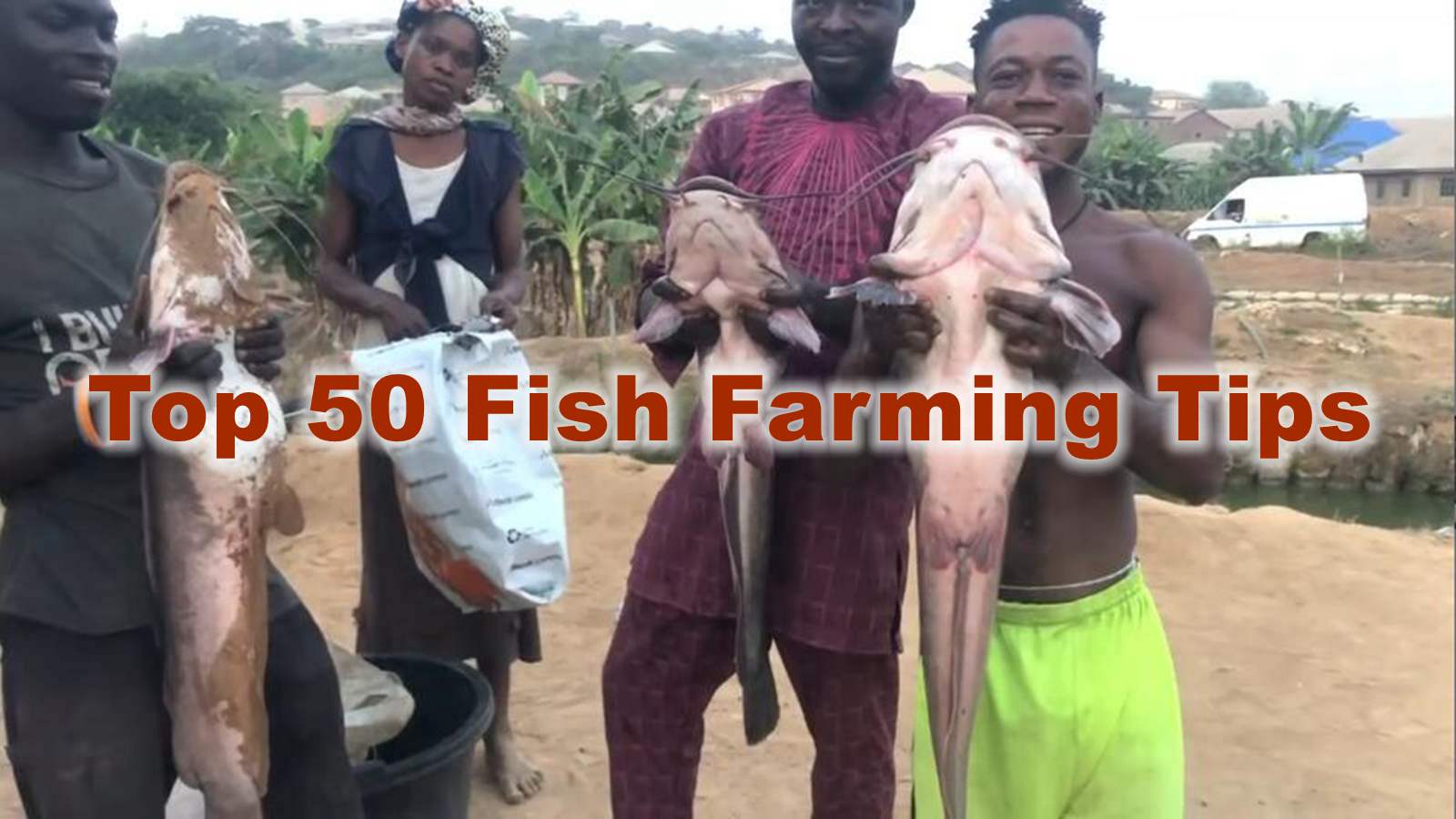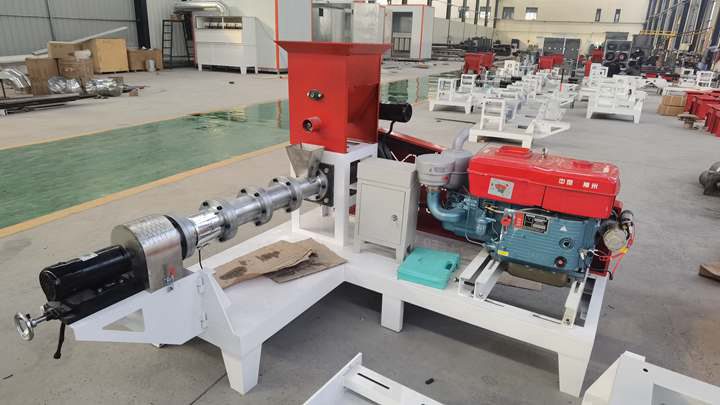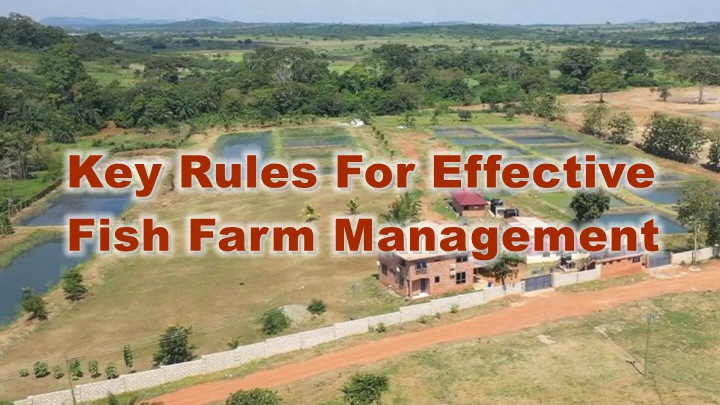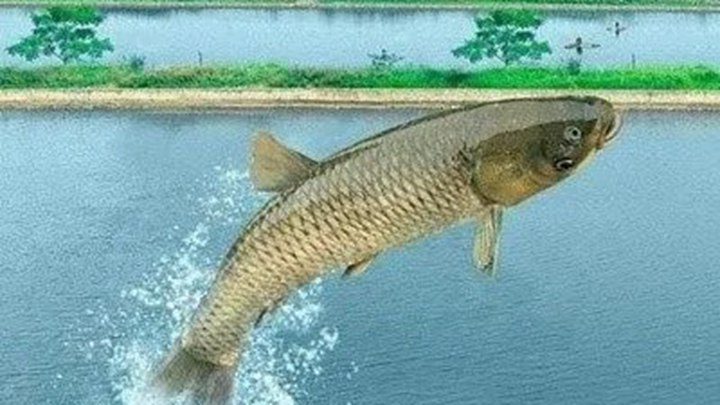Introduction to top 50 fish farming tips, ideas, and techniques: Fish farming is a lucrative and very profitable farming business that is practiced all over the world. Fish farmers raise many commercial species of fish using a variety of methods and systems. The different systems adopted for fish farming and the types of fish are different for different climatic zones.
Fish is one of the main components of animal protein in the fish diet. The popularity of fish farming is growing as food promotion around the world has boosted the fish farming business globally. Fish farming is a form of aquaculture system. This includes selective breeding of fish, either in freshwater or in seawater.
It is highly exploited because it allows the production of a cheap source of protein. Also, it is easier to do than other types of farming because it does not take care of the fish, but only requires proper food and water conditions as well as temperature. Fish is a protein-rich, delicious, and healthy food that is low in cholesterol. Generally, fish and fish-related products are in great demand all over the world.
Fish farming practices play an important role in the economy. It provides many job opportunities in ancillary services and operations. This business requires careful daily supervision, expertise, and specialized knowledge. If you want to start a fish farm then these fish farming tips will be helpful for you. These tips help how to start fish farming with minimal investment. Here, we mentioned the top 50 tips to start successful fish farming;
- Tips for fish farming
- Environmental factors to be considered for land selection for fish farming
- Tips for choosing fish farming methods
- Tips for pond preparation
- Tips for selecting resources and materials for fish farming
- Feeding tips for fish farming
- Tips for controlling diseases, parasites, and predators in fish farming
- Water supply for fish farming
- Fish pond fencing
- Environmental issues with fish farming
- Learn the skills needed for fish farming
- Marketing tips for fish farming business
Tips for fish farming
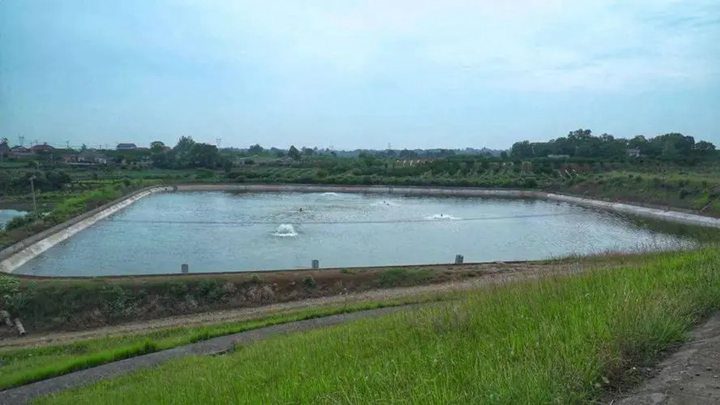
- Choosing the right location is one of the most important factors determining the success of a fish farm. Care has to be taken of the soil water retention capacity and soil fertility as these factors affect the reaction of organic and inorganic fertilizers in the farm ponds. There should be an adequate water supply throughout the year for filling ponds and other uses at selected locations.
- The construction of the pond should be based on the topographic area. Self-drainage fish ponds are ideal for high-altitude areas.
- The site must be easily accessible by road or any type of transportation to reach the market for easy disposal of fish. In addition, access to inputs such as feed, seeds, fertilizers, and construction materials should be available near the site. The selected site should be free from pollution, industrial waste, household waste, and other harmful activities.
Environmental factors to be considered for land selection for fish farming
- Water Supply– Adequate and sufficient quality water supply is the most important factor for constructing a fish pond. Therefore, proper water source research should be done very carefully in site selection.
- Water quality– Water quality is one of the most important factors to consider when choosing a site. For laboratory analysis of physical, chemical, biological, and microbiological properties, including health hazards, it should be researched by taking several samples of water from the proposed water source.
- Climate– The main climatological factors obtained from the nearest meteorological station to the site are;
- Mean monthly temperature
- Mean monthly rainfall
- Mean monthly evaporation
- Mean monthly humidity
- Mean monthly sunshine
- Mean monthly wind speed and direction
- Hydrological characteristics– For fish farm site location, important data can be gathered from sources such as irrigation departments or other water authorities. Some data can be required– data on discharge, production, flood, and elevation of existing water sources (rivers, irrigation channels, reservoirs, springs, etc). Soil has properties that can be easily gauged from sight and perception. Visual tests are used instead of precise laboratory tests to explain the basic properties of soil.
- Land must be verified that the proposed area of land is suitable. The general shape of the land should be with slopes not exceeding 2%. The value of the land will be lower, if wasteland which means land that is unsuitable for agricultural or other direct use, is selected for a project. For determining the suitability of the area for fish farm or hatchery construction, elevation and flood level are important factors.
- Biological factors– Before selecting a location for a fish farming project, the following should be explored
- Select fish species
- Resources and availability of storage materials (spawners, fry, or fingerling).
- Project type (small scale rural project or large-scale project).
- Tips to finding your fish farm (Where to Keep Your Fish Pond).
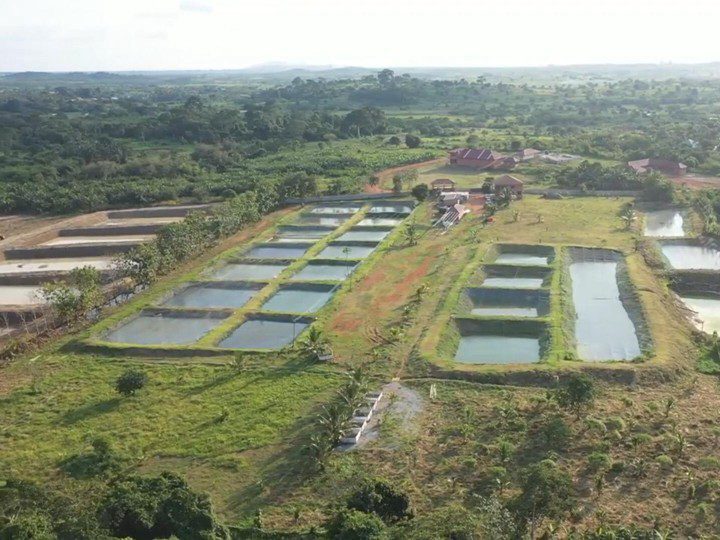
- You should choose a good place to plant your pond. Remember that a pond for fish is just a job for your land. Be careful not to build ponds on the ground that could be used for anything else.
- It is better to place the pond on a light slope or hill so that you do not have to dig much soil to make it. It is also easy to draw water from a pond built on a slope.
- Do not build your pond in a place that is low enough to fill with water during the rainy season. Do not build your fish pond on a steep hill.
- For constructing your fish pond, choose a sunny spot near your home so that you can easily take care of the fish and not let people come and take your fish.
Tips for choosing fish farming methods
- For raising fish, the first method is the cage system. In this system, use cages are placed in lakes, ponds, and oceans that contain fish. This method is also widely known as offshore farming. The fish are kept in cages like skeletons and are “artificially fed” and harvested.
- Fish farming cage methods have made many technological advances in recent years, especially with the reduction of diseases and environmental concerns.
- The second method is an irrigation ditch or pond system for raising fish. The basic requirement for this procedure is to have a ditch or pond containing water. This is a unique system because the fish are fed artificially on a small scale and then the waste generated from the fish is used to fertilize the farmers’ fields. Largely, in most ponds, the pond retains itself as it grows plants and algae to eat fish.
- The 3rd method for fish farming is the composite fish culture. It allows local fish species and imported fish species to live together in the same pond. Depending on the number of species, sometimes up to six species of fish in a pond.
- The 4th method of fish farming is known as the Integrated Recycling System. It is considered to be the largest method of “pure” fish farming. This approach uses large plastic tanks that are placed inside the greenhouse. There are hydroponic beds placed near plastic tanks. Water is transported in plastic tanks to hydroponic beds, where fish meal waste is fed to plant crops growing in hydroponic beds. The majority of plants grown in hydroponic beds are herbs such as celery and basil.
- The last method of fish farming is known as classic fry farming and this is also known as a” flow-through system “. This occurs when species of game fish are picked up from eggs and released into streams.
Tips for pond preparation
- The most important infrastructure of the fish farming business is a pond. We can’t do fish business without a pond. You can use your existing pond or build a new one for fish farming.
- In the case of fish farming in seasonal ponds where there is no water all year round, we need to increase the breeding of some fast-growing and early-maturing fish. Thoroughly clean the bottom of the pond and then fertilize it. Improve the pH value of pond water and soil. A high-quality pond environment ensures high productivity and profitability.
Tips for selecting resources and materials for fish farming
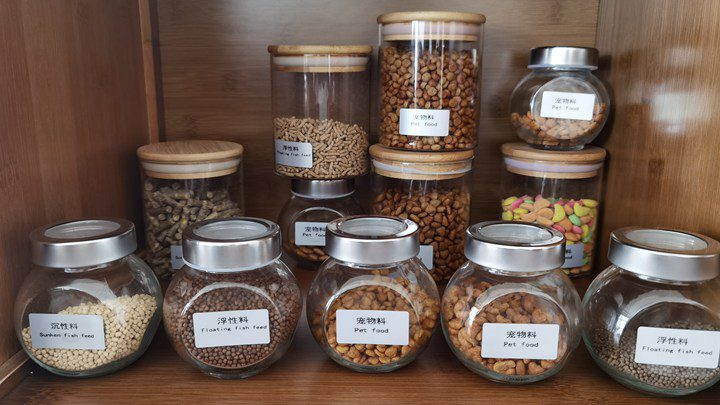
- Ponds require specific soil types and slopes, so many features are not suitable for pond construction. It may be easier to store fish in the ponds on your property, but it is recommended that you still consult with local experts to find out your area, climate, and even your particular pond’s ecology. Electrical supply and reliability are important for most fish farming companies. Other items you will need include;
- Feed according to your fish stock.
- Fuel to run the operation.
- Medicines because the chances of the disease spreading through your stock are higher than you expect.
- Diagnostic instruments and equipment for measuring pH balance and other necessary maintenance.
- Equipment for fish farming.
- Fish pumps and fish elevators– This equipment is used for sorting fish out of growing units, for loading on trucks, or harvesting only. Fish pumps operate on the same principles as water pumps; they suck fish and water together and then take them out. All movement is done through (flexible) pipework.
This system is especially suitable for floating cage culture. This system lifts water and fish together. Both systems are suitable for a wide range of office sizes (from a few grams to more than 5 kilograms) and species. When high productivity levels are considered, this equipment is very useful which is almost essential. This type of machinery can reach up to 10 tons of fish per hour for the largest.
- Fish graders– Fish graders are used to classifying and separating fish according to their size. This operation is important because it allows for dramatic improvements in development performance and improves the overall management of the use of farm facilities. If fish are not properly classified, small fish have difficulty accessing food (due to physical competition with larger fish) and suffer from stress, resulting in poor growth performance. Since the size of the fish pellets is the same, the size of the fish should also be uniform.
- There are many feeding systems– As discussed in the nutrition chapter, tilapia is a fish that should be fed in small amounts often. Then demand feeders are especially suitable for this fish. Pipe and plumbing requirements are broad for anything above ground, and if the pipes fail or close, you will need extra money on hand for repairs, meaning the fish will die.
Backup generators are important because power outages mean the air system fails, which can be fatal for crowded tanks in minutes. For hobby farms that want to store ponds, cage culture can be good, as a cage of only 3 by 1.5 by 1.5 feet can hold 100 pounds of fish. Underwater nets can also work for pool desires. For tanks or stagnant water, aerators and diffusers are needed to circulate oxygen and circulate the air in bubbles for better circulation to the fish.
- Filtration is very important for tanks, unnatural water resources, and any other method of fish farming as it controls the amount of ammonia and nitrates, and nitrates in the water.
- Some other tools are needed for fish farming– Another important aspect is the purchase of certain types of equipment. The following are some of the basic tools and equipment required in fish farming;.
- Pumps.
- Aeration devices.
- Net/ Seine Reels.
- Handling and grading equipment.
- Graders.
- Fish counters.
- Tips for selecting fish species.
- The first thing you need to consider when starting a fish farm is the type of fish you are going to use for farming. The success of the fish farming business mainly depends on selecting the right fish species. The decision should be based on a maintenance approach, market demand, management approach, and resource availability.
- Fish species selection is the most difficult step for most people who want to start a fish farming project. This is because there are different types and species of fish. So, before you decide to start fish farming, you must have all the facts about it so that you can make wise choices. This is because many factors need to be carefully considered, which, if left unchecked, can have a devastating effect on productivity.
- Fish farming is a very expensive investment and therefore it is not a matter of deciding what kind of keeping you want to do randomly. The selection of suitable breeds of fish plays an important role in overall production and profitability. Always try to breed fish that are suitable for your area.
- When choosing fish breeds, consider the market demand for fish, maintaining facilities, natural facilities for fish farming, the best source of abundant water, efficient use of resources, and some other factors. Some of the most suitable fish species for farming in freshwater ponds are Katla, Rui, Grass Carp, Silver Carp, Common Carp, Tilapia, Koi, Shrimp, various species of catfish, etc 32. You can raise multiple species of fish together for proper use of the pond and water resources. You can contact your nearest fish breeder or fisheries department for a standard minnow.
Feeding tips for fish farming
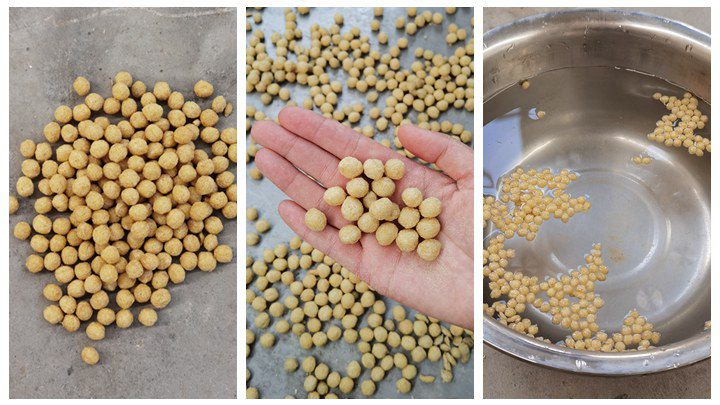
- The good and high-quality fish feed can maximize overall production. Most of the farmers in our country depend on the natural food of the pond. But for commercial production, you need to provide the fish with high quality and nutritious food.
- You can also install a variety of integrated fish farming systems. Fish-poultry, fish-dairy, fish-duck, fish-pig, fish-paddy, fish-goat, and fish-vegetables are the most popular integrated fish farming systems.
- Now that you have chosen the right species of fish, let’s see how you feed them. Like humans, fish need good food to grow healthy and fast. Fish populations must be limited to ensure that they do not compete for food. Fish, especially tilapia, mostly eat algae, prepared fish food, or aquatic insects. You can buy pills made from either soy, corn, vegetable products, or rice.
- Properly cared for and fed your fish, they will gain weight faster and gain weight faster. You can also increase the algae growth in the pond by just adding chicken drops or fertilizer. They will grow faster, so they provide additional sources of food. Make sure you don’t leave unattended food in the fish pond for hours. This is because it can be toxic. When buying supplements, make sure you insist on the species you breed because there are different supplements for different species.
- Choose the right fish diet– For successful fish farming and better production, you need to feed the fish good and nutritious extra fish. Also, you can use some low-cost conventional or unconventional animal by-products and plant residue in fish feed.
- There are three sources of food for your fish.
- Natural fish feed– It is found naturally in ponds. It mainly includes plankton, worms, insects, snails, aquatic plants, detritus, bacteria, and fish.
- Supplementary fish feed– This usually includes cheap locally available materials such as ground plants, kitchen waste, or agricultural by-products. The supplementary feed may be good, but it is not for serious fish farmers (unless it includes other types of feed).
- Complete feed– This is a carefully prepared fish feed. They are usually made up of good ingredients and nutrients, developed by experts who understand the best formula for fish at different stages.
Tips for controlling diseases, parasites, and predators in fish farming
- Always keep the fish pond clean to prevent the entry of parasites and diseases. You can get help and guidance from an aquaculture professional on the right medicines that you can use to treat sick fish.
Water supply for fish farming
- A constant supply of water is essential for fish farming. We can’t stress how important it is. Raising fish in unreliable waters not only puts pressure on them but also causes unhealthy fish which leads to low yields. Find a place where fresh and clean water is cut off. Find places near rivers, lakes, streams, or even boreholes.
- The fish pond should be close to a good water supply that has plenty of water all year round. You should make sure you have enough water to fill your pond and add more water when you need it.
- Do not rely on rainwater to fill your pond. Your water should come from the top of the pond so that the water automatically goes into the pond. Water should not have odor, taste, or color. It should not be too muddy. There should be no wild fish in the water. You don’t want wild fish in your pond because they can eat your fish or stop them from growing. The natural spring water near the pond site is generally good and will not contain wild fish. The water of a river or lake or cistern is generally good but may contain wild fish. You have to be careful not to let wild fish swim in your pond.
Fish pond fencing
- The pond is fenced to prevent theft. The live fence also acts as a windbreak, increasing farm diversity, providing farm privacy, and improving the appearance of fish farms. There are several ways to build a fence for fish farms. These include living fences, pile fences, woven fences, post and rail fences, wire fences, wire mesh fences, and stone walls. Wired net fences are mainly used to prevent intruders on fish farms and to protect fish stocks.
Environmental issues with fish farming
- Fish farming is a way to produce large quantities of fish much faster, cheaper, and more efficiently than wild fish. Pollution– This density of fish causes problems such as disease and pollution. The biggest source of pollution is the accumulation of fish waste and inedible food under seawater, which can degrade the quality of the surrounding water.
Like commercial farming activities on land, these pens require specific chemicals to keep fish dens and animals from getting sick and to keep things clean. Chemicals used in marine aquacultures as chemicals such as antibiotics and vaccines, disinfectants, and chemicals used to prevent corrosion of equipment (cages, etc) also alter the structure of the surrounding aquatic ecosystem.
- Effects of Biodiversity– Another way in which aquaculture can be adversely affected is by introducing a variety of crops into the wild and therefore changing the biodiversity of the aquatic ecosystem. Even when measures are taken to prevent the escape, predators such as birds and sharks, equipment failure, human error, severe weather, and other complications mean that the escape of farm fish is inevitable.
- The spread of the disease and the use of antibiotics– Because farmed fish are raised on unnatural food and in small enclosures, they often cause disease, which can spread to wild populations. This is becoming increasingly a major problem, as are the frequently used solutions to these diseases. Some aquaculture products rely on prophylactic antibiotics to prevent infection. The use of antibiotics can lead to the growth of drug-resistant bacteria that can spread to wild populations.
Learn the skills needed for fish farming
- It is important to learn some skills before starting a fish farming business. Some governments run farms that run training programs and you can participate in these types of programs to learn skills. In addition, we can learn skills by working in a successful fish farm. It will teach you how to control disease, manage water quality, market, feed and process. There are several important things to keep in mind when starting a fish farming business. They are given below;.
- Make sure you have a permanent quality water source.
- Carefully check if your water temperature level is suitable for raising fish.
- They must have easy access to the pond for harvesting and feeding.
- Check the water in which you are starting to cultivate fish, both bacteriologically and chemically.
- You should know the latest technical methods of risk management and risk assessment.
- It is very important to find reliable suppliers for fingerlings, fish eggs, and fish feed.
- Learn about the permissions and legal requirements required to start a fish farming business in your area.
- Fish harvesting tips.
- After a certain period, the fish becomes suitable for harvesting. Although this time depends on the species of fish. When large numbers of fish have reached the marketing age, start harvesting. You can use a net to catch fish or to draw water from a pond. Try pruning in the morning or afternoon when the temperature is low. After that, send the fish to market as soon as possible after harvest.
This is done either using a net or in cases where you are harvesting all the fish to remove the entire volume of water. It should be noted that different types of food are cultivated in different stages and weights. To get the most out of your food and provide quality fish to your customers, you need to make sure they are harvested properly and at the right time.
Marketing tips for fish farming business
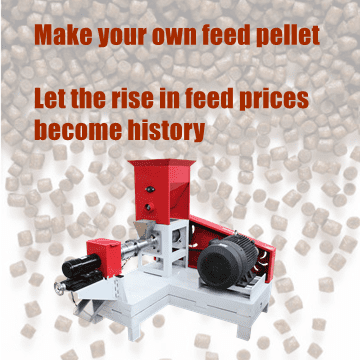
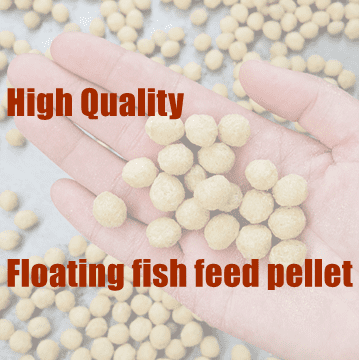
- Marketing is the easiest part of the fish farm business. There are many markets available where you can sell your products. And there is a huge demand for all kinds of fish in the market.
- After harvesting, you can easily sell the fish at your local market. There are even many companies that export fish to foreign countries. So don’t worry about product marketing, just focus on the other steps. In a word, the commercial fish farming business is very profitable and a good source of livelihood. If you plan to join the project, visit some fish farms in your area and try to get some practical information.

